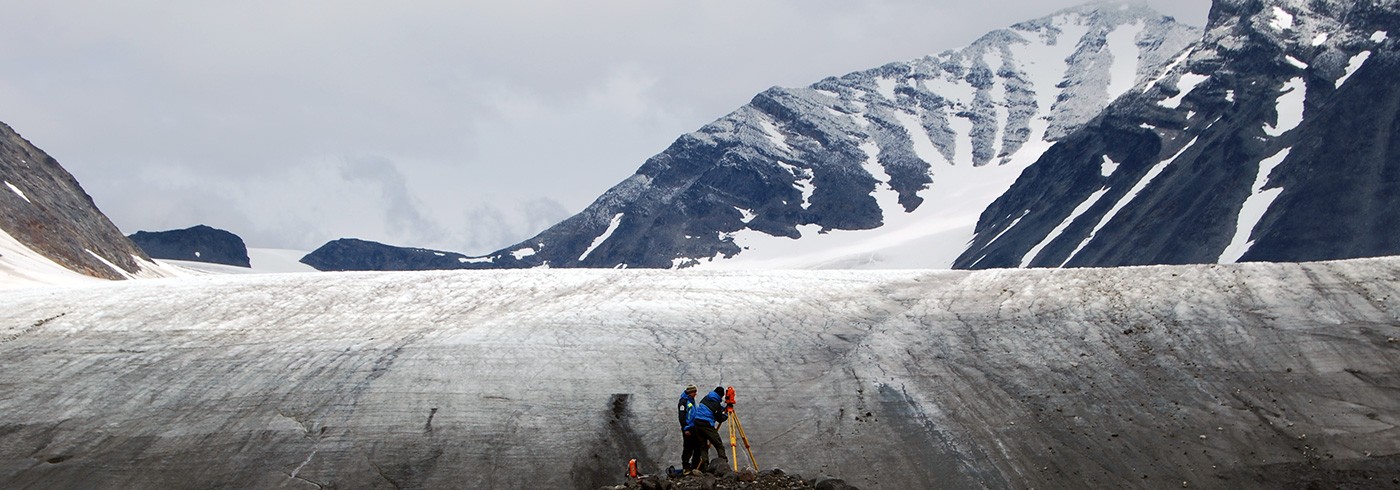Glacier-climate interactions
21 July 2008 - 24 August 2008
The scientist measured the glaciers that are still large and active. Salajekna is the largest glacier in Sweden and is located in the Sulitelma Massif. Photo: Gunhild Rosqvist
Present climate change severely affects Swedish glaciers. Exactly 100 years prior to the ongoing International Polar Year 2007–2008 (IPY) the first systematic survey of Swedish glaciers was made and published by the Swedish Geological Survey. Using satellite images covering Sweden, 270 glaciers have been identified. Monitoring of the response of Swedish glaciers to climate changes is carried out by Tarfala Research Station.
The definition of a glacier when it is building up requires that it should be in motion. The ice has to be more than 30 metre thick for ice deformation to occur which allows for movement. Many of the smaller glaciers are probably close to being inactive although this is difficult to gauge without detailed depth measurements. During Arctic Sweden we focussed on the glaciers that are still large and active. This is because the potential increase in melt of these glaciers will increase discharge in the rivers and will contribute to the increase in sea level. We therefore decided to make detailed field surveys of a number of reference glaciers located along the mountain range from Helags to Abisko. During the campaign in August we focussed mainly on the glaciers located in the inaccessible Sarek mountains. With permission from the local government we used helicopters to access the Sarek glaciers during two weeks in August. We generally needed a day per glacier when we measured the snout positions of the Mikka, Pårte, Ruopsok, Souttas, Rhuotes and Vartas glaciers. We also measured the extent of Hyllglaciären and the front position of Salajekna, the largest glacier in Sweden. Before the summer we had digitised the old data so that immediately as we recorded the new results we were able to compose maps and calculate the total recession. The results show that all glaciers have receded, some most dramatically.

